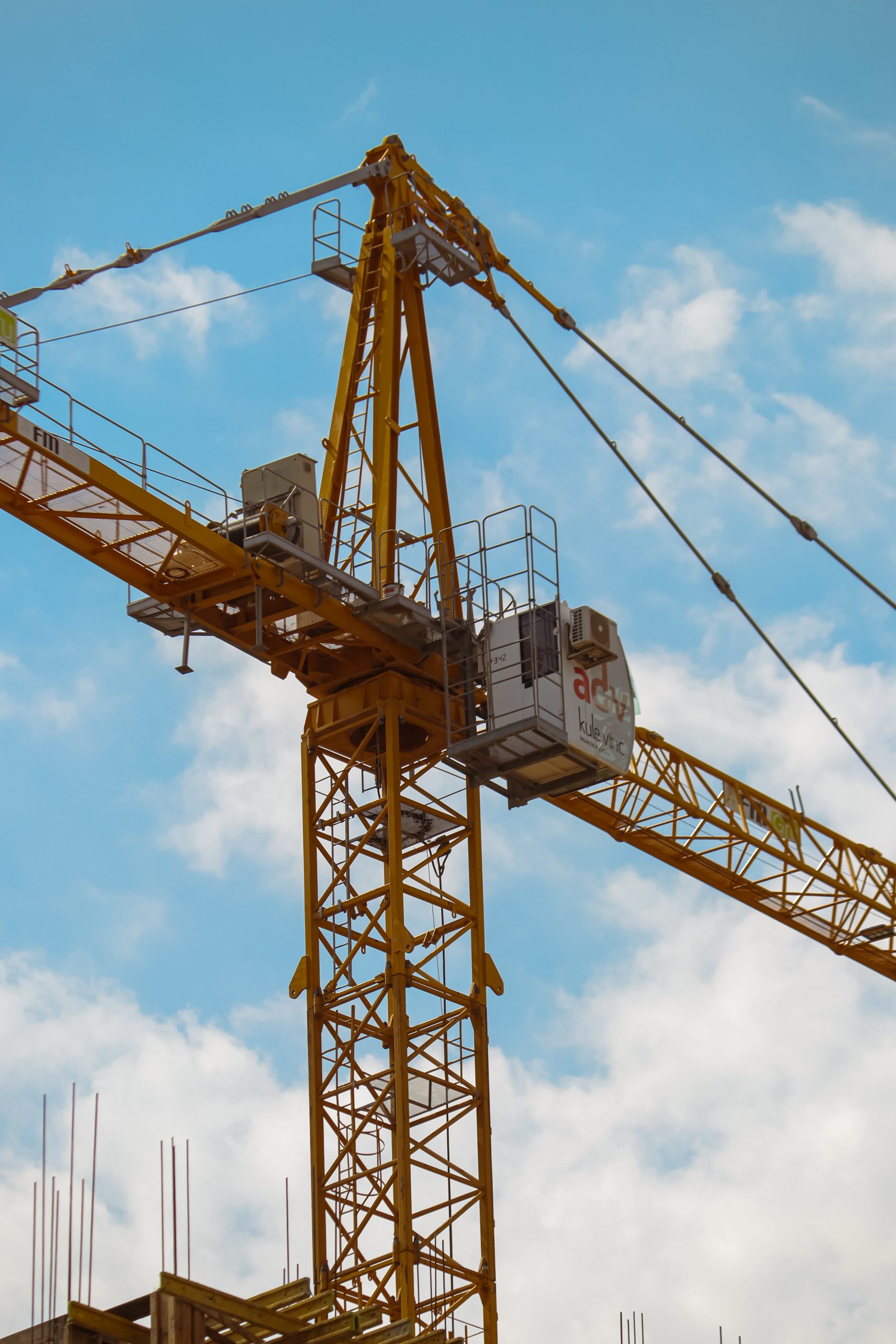Are you feeling overwhelmed by the legal complexities surrounding construction risk management? Look no further! In this article, we aim to address your common concerns and provide you with the reassurance and guidance you need. With our comprehensive knowledge and expertise, we understand the importance of minimizing your risks and protecting your interests. So, fret no more and read on to learn how you can navigate through the maze of legal issues surrounding construction risk management. Don’t hesitate to reach out to us for further assistance – we’re just a phone call away!

Understanding Construction Risk Management
Construction risk management plays a crucial role in ensuring the success and safety of construction projects. It involves identifying, assessing, and mitigating potential risks that may arise during the construction process. By proactively addressing these risks, construction companies are able to minimize potential financial, legal, and safety issues. Understanding the key aspects of construction risk management is essential for all stakeholders involved in a construction project.
What is Construction Risk Management?
Construction risk management is the process of identifying, evaluating, and controlling potential risks that may adversely impact the successful completion of a construction project. This involves analyzing various aspects such as project planning, design, procurement, construction, and maintenance. The goal of construction risk management is to minimize the likelihood of risks occurring and to effectively respond to any risks that do arise.
Importance of Construction Risk Management
Construction risk management is of utmost importance due to the complex and dynamic nature of construction projects. It helps to ensure the successful completion of projects within budget and time constraints. By identifying and managing potential risks, construction companies can prevent costly delays, accidents, and legal disputes. It also helps to protect the reputation and credibility of construction firms, maintain a safe working environment, and comply with legal and regulatory requirements.
Common Legal Issues in Construction Risk Management
Construction risk management is closely intertwined with legal issues that may arise throughout the construction process. Some of the common legal concerns in construction risk management include contract disputes, insurance claims, safety compliance violations, project delays, environmental regulations, labor laws, intellectual property rights, and disaster management. Understanding and addressing these legal issues is vital for effective construction risk management.
Contractual Agreements
Contracts play a significant role in construction projects as they establish the rights and obligations of all parties involved. Understanding different types of contracts and key elements in construction contracts is essential for construction risk management.
Types of Contracts in Construction
There are various types of contracts commonly used in construction projects. These include:
- Lump Sum Contracts: In this type of contract, the contractor agrees to complete the project for a fixed price.
- Cost-Plus Contracts: This contract involves reimbursement of construction costs, along with an additional fee for the contractor’s services.
- Unit Price Contracts: In unit price contracts, the price is based on the quantity of specific units of work.
- Time and Material Contracts: This type of contract allows for billing based on time spent and materials used.
Key Elements of Construction Contracts
Construction contracts typically include the following key elements:
- Project Scope: This defines the work to be performed and the deliverables.
- Schedule: The timeline for completing different stages of the project.
- Payment Terms: The agreed-upon payment schedule and method of payment.
- Change Orders: Procedures for making changes to the original contract.
- Dispute Resolution: The mechanism for resolving conflicts or disagreements.
Legal Issues Related to Contractual Agreements
Legal issues can arise in contractual agreements during construction projects. Some of the common legal concerns include:
- Breach of Contract: When either party fails to fulfill their obligations as per the contract terms.
- Change Order Disputes: Disagreements regarding changes to the scope or cost of the project.
- Delay Claims: Claims for damages resulting from project delays.
- Payment Disputes: Issues related to non-payment or disputes over payment amounts.
- Termination of Contracts: Situations where one party terminates the contract prematurely.
Understanding these legal issues and having well-drafted contracts in place can help mitigate and resolve conflicts that may arise during construction projects.

Insurance Coverage
Insurance plays a vital role in managing construction risks. It provides financial protection in the event of accidents, property damage, and other unforeseen circumstances. Understanding the importance of insurance and the different types of coverage available is crucial for construction risk management.
Importance of Insurance in Construction Projects
Insurance coverage is essential for construction projects due to the inherent risks involved. It provides financial protection to the construction company, contractors, subcontractors, and other stakeholders. Construction insurance helps cover costs related to property damage, injuries, accidents, and legal claims. It also ensures compliance with legal requirements and contractual obligations.
Types of Insurance Coverage for Construction Risks
Various types of insurance coverage are available to mitigate construction risks. These include:
- Builders’ Risk Insurance: Protects against damage to the construction project during construction.
- General Liability Insurance: Provides coverage for bodily injury and property damage claims.
- Workers’ Compensation Insurance: Covers medical expenses and lost wages in case of employee injuries.
- Professional Liability Insurance: Protects against claims for errors or negligence in professional services.
- Environmental Liability Insurance: Covers pollution-related risks and environmental damages.
Understanding which insurance coverage is required for specific construction projects is crucial to ensure adequate protection against potential risks.
Legal Issues Regarding Insurance Claims
Legal issues may arise when making insurance claims for construction-related incidents. Some common concerns include:
- Coverage Disputes: Disagreements over the extent of insurance coverage for a particular incident.
- Policy Exclusions: Exclusions in insurance policies that may limit coverage for certain types of losses.
- Subrogation Claims: Insurance companies seeking reimbursement from responsible parties after paying a claim.
- Insurance Fraud: Fraudulent claims or misrepresentation of facts to obtain insurance benefits.
Understanding the legal aspects of insurance claims and having appropriate documentation is essential to ensure proper coverage and timely resolution of claims.
Safety Regulations and Compliance
Safety regulations and compliance are crucial in construction risk management. Prioritizing safety and adhering to legal requirements help prevent accidents and injuries, protect workers, and mitigate legal liabilities.
Importance of Safety Regulations in Construction
Safety regulations establish guidelines and standards that construction companies must comply with to maintain a safe working environment. Prioritizing safety reduces the risk of accidents, injuries, and fatalities on construction sites. It also helps protect the reputation and financial stability of construction companies.
Common Legal Issues Related to Safety Compliance
Failure to comply with safety regulations can result in legal issues for construction companies. Common legal concerns related to safety compliance include:
- Occupational Safety and Health Administration (OSHA) Violations: Non-compliance with OSHA regulations can lead to penalties and legal consequences.
- Workers’ Compensation Claims: Failure to provide a safe working environment can result in injury claims by workers.
- Negligence Lawsuits: Construction companies may face lawsuits if their negligence leads to accidents or injuries on site.
- Third-Party Liability: Construction companies may be held liable for accidents caused by subcontractors or other third parties.
Complying with safety regulations and implementing best practices not only reduces the risk of legal issues but also fosters a culture of safety within the construction industry.
Liability and Legal Consequences for Non-Compliance
Non-compliance with safety regulations can have severe legal consequences for construction companies. These may include:
- Fines and Penalties: Regulatory authorities can impose significant fines for safety violations.
- Lawsuits and Legal Claims: Non-compliance with safety regulations can result in personal injury or wrongful death lawsuits.
- Reputational Damage: Safety violations can harm the reputation and credibility of construction companies.
- License Suspension or Revocation: Regulatory bodies may suspend or revoke construction licenses for repeated safety violations.
Understanding the potential liabilities and legal consequences of non-compliance is crucial for construction risk management and for ensuring the safety of all workers involved in construction projects.
